‘Kazan is losing its identity because of spruce in mass planting’
The capital of Tatarstan has a good green background, but infrastructure has yet to be built
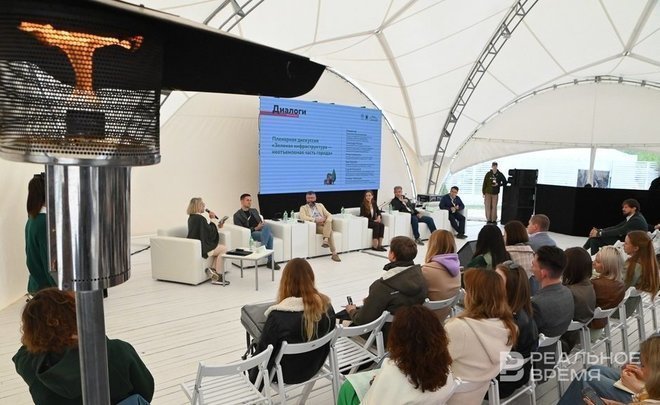
The fifth anniversary architectural and urban planning conference “Dialogues. Summer Meetings” started on 21 June. The event opened with the plenary discussion “Green infrastructure is an integral part of the city”, where the main problems of design, construction, and operation of green spaces were discussed. As Igor Safiullin, the chief landscape architect of Tavrida — ART, stated during the conversation, Kazan is losing its identity today because of illiterate planting, which is not carried out in accordance with the norms, but pleasing someone's desires. Read more about what landscape and architectural problems are in the city today and how to deal with them — in the material of Realnoe Vremya.
“Green infrastructure is the most ideal and unique 'third place”
Let us remind that the conference “Dialogues. Summer Meetings” has been held not the first year. During the previous meetings, the topics such as Art In The City, Renovation of Industrial Territories, City For Youth, and Transport System were already discussed. The essence of the current event is to create a connected and comfortable green infrastructure. Ilsiyar Tukhvatullina, the chief architect of Kazan, and Alexey Gorbunov, the director of the City Development Institute, addressed the participants with a welcoming speech.
“We have recently prepared a report about 'third places' ('third place' is a part of urban space that is not connected with home ('first place') or with work ("'second place'), which we will present in Moscow. When I was preparing for it, I realised that green infrastructure is the most ideal and unique “third place” connecting all these spaces in the city. The better we work out this topic, the better it will be," Tukhvatullina said.
In his turn, Gorbunov added that the creation of green infrastructure is “a chance for everyone to improve their living environment”. At the same time, as the chief architect noted, she “participates less and less in the formation of programmes," but “if we don't like something in the city, then we have to adjust it to ourselves”:
“If each of us makes at least a small piece of the city perfect for ourselves, then the whole city will be perfect for us," she stressed.
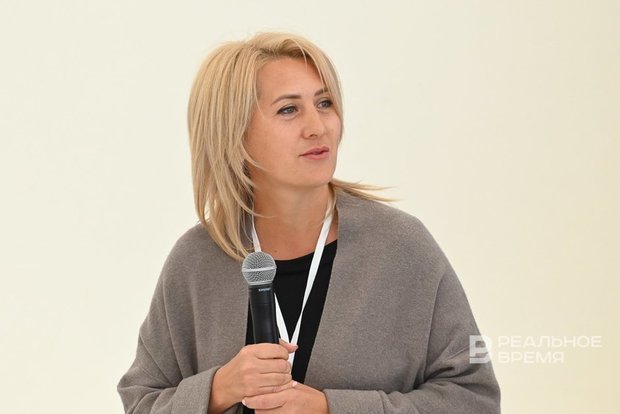
The moderator of the discussion was Svetlana Khusnutdinova, Candidate of Geographical Sciences, Associate Professor of the Institute of Management, Economics and Finance of the KFU, expert of the Kazan Development Institute. She began the meeting with the reasoning that in words a tree is something beautiful. However, when it comes to yards, the question becomes very acute — what is more necessary — a tree or parking? She asked this question to the scientist-agronomist-ecologist, wood inspector, head of the TEP assessment sector of the Institute of Spatial Planning of Tatarstan and expert of the Institute of City Development, Alexander Matyukha. He, in his turn, stated that in this topic there is really the wording “either — or”, but there should be only “and — and”:
“This is our daily infrastructure conflict, and in fact, there is a black and white approach here. It is necessary to fit both the parking lot and the tree. But this requires a competent project of the yard territory, which takes all this into account. All motorists are the same ordinary citizens, and when they leave the entrance to get to the car or when they leave it, they face this set (of problems, — editor's note). We need to find a compromise solution. If there are parking lots without trees, then we will get a lot of temperature pollution, dust, and also our air quality will decrease," he said.
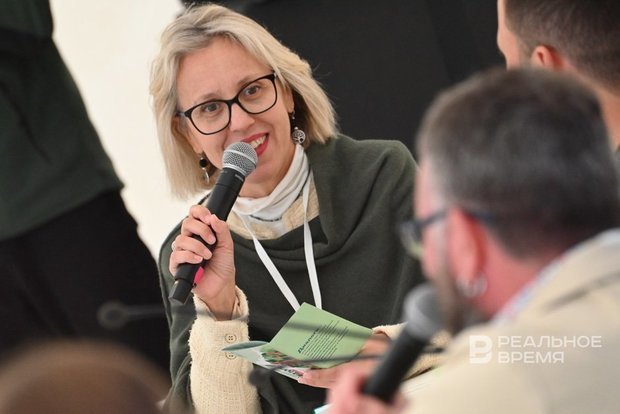
At the same time, the expert noted that conflicts of yard territories appear not only about the felling of trees for parking spaces. As an example, he told a story from his practice:
“In one of the yards in Kaliningrad Oblast, all the trees were cut down, and the locals rebelled very much. It turned out that an elderly local resident asked to do this, who contacted the administration because the birds were interfering with her. This case was used to ensure that we improved the regulatory framework when the law On the Protection of Green Spaces was developed," the specialist shared.
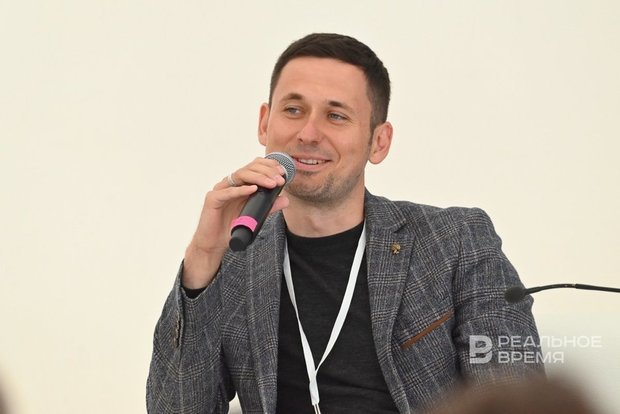
“Trees are not even cut, but amputated”
Continuing the topic of conflicts in the field of green infrastructure, Khusnutdinova decided to ask a question about beauty. According to her, a modern person can estimate how much a cubic metre of forest or lawn costs. However, how much does beauty cost? She clarified the question, adding that citizens often consider lilac beautiful, but they don't like ash-leaved maple. So “how much does the beauty of lilacs cost”?
Igor Safiullin, an engineer of garden and park construction, chief landscape architect of Tavrida — ART, answered this question, who noted that a comprehensive assessment of the decorative qualities of plants is a completely natural work.
“We should always easily operate on the possibility of using plants in certain landscape compositions. Speaking about decorative qualities and evaluation, we can operate with morphological qualities (flower, bark, stem), but there are also non-obvious things that are produced in a complex. They have a psychoemotional effect on a person. For example, any plant has a certain history. Why are lilacs more beautiful than maple? Because there is always some story that you remember. This is our life experience. And all this is reflected in the physiognomic type of plants. If they are combined with each other, then a highly decorative planting is obtained. But if not, then we see a contrast," he said.
“If we talk about material valuation, then we live in a world of money. The aesthetic qualities of plants belong to a set of services, which is called systemic. Thanks to the decorative qualities, we can assess how much the plant has improved a person's condition, calmed him down, and how comfortable he is in such an environment," Safiullin continued.

As Khusnutdinova said, she grew up in the Vakhitovsky district of Kazan, where a large number of poplars grow to this day. According to her, one of them was planted by her grandfather under the window of her apartment, but a few years later someone cut down the poplar. Therefore, in continuation of the topic, she asked the question: is it possible to save the tree for future generations? “Old trees are very often perceived as a danger," she added.
According to Sergey Palchikov, Candidate of Agricultural Sciences, president of the Union of Tree Care Professionals, head of Healthy Forest tree expertise centre, old age is a concept that is not very applicable to a tree. He noted that trees can live for several hundred years during their aging. However, the problem really exists — these are abandoned and unkempt plants.
“Every person who plants a tree is not even a missionary, but a visionary. He has to look into the future. Because it is at the moment of planting a tree that he gives him either happiness and life or destroys him. A correct or incorrect planting can give birth to a conflict of interests and ruin the strength, energy, love and money spent. The main rule of a person who plants a tree is: “If you want to plant a tree, then imagine how it will feel in this place in an adult state," he said.
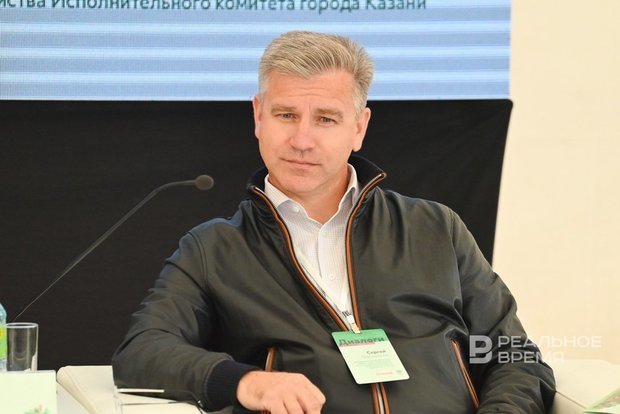
Speaking about the danger of old trees, Palchikov noted that, from the point of view of biomechanics, they are even more stable because they have more roots and a large trunk:
“Rot, damage, hollows and emptiness inside are not an indicator for removing a tree. From the point of view of biomechanics, a tree that is empty inside, but with a trunk diametre of more than 60 centimetres, is stronger and more stable than an absolutely healthy one, but with a diametre of more than 30 centimetres. We must remember that everything is formed in childhood. There is a good folk wisdom: 'You need to raise a child while he is lying across the bench, when he lies down along — it will be too late.' It's the same with trees — we create and shape all the health and safety of an adult tree in our youth. And pruning is its upbringing. Has anyone ever seen that city trees are being pruned? They're cut," he said.
As Matyukha added, “trees are not even cut, but amputated”. According to him, most of the photosynthetic surface and everything due to which the tree exists is removed as a result of careless pruning by public utilities. “Such a radical cutting is like cutting off half of our heads during a haircut," he stressed.

“People don't just need trees, they need something else”
The next question was addressed to Vera Burtseva, the director of the Research Institute for Sustainable Development in Construction ANO: what functions do trees have in a modern city?
“Trees create a psychoemotional background, but such part of their work as energy and water efficiency, as well as comfort, for some reason, is ignored. Trees are a shadow. We all have experience when a child wants to run around the playground at noon in the summer. But we have nowhere to hide from the sun. The child is running, but you want to go home. Trees create light comfort, as well as acoustic one. If you look at domestic practice, then in the books of 1960 “On the improvement of residential neighborhoods”, it was said that the playground should be fenced with a three-metre strip of shrubs. For what? To extinguish the sound wave. Many of us, when we started working remotely, faced with that when children walk in our enclosed yards at lunch, they make noise and this noise gets into the apartment," she explained.
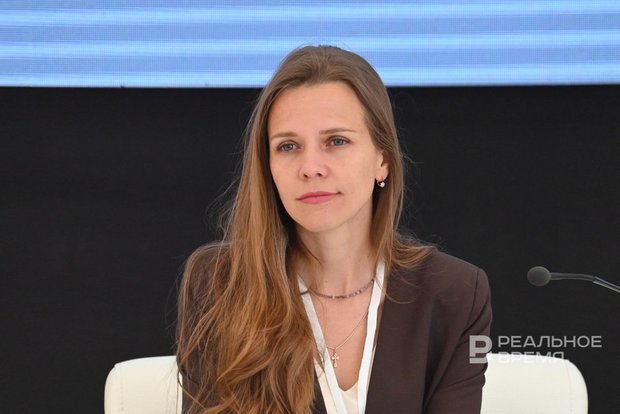
Burtseva also said that digital technologies today can simulate wind flows in residential areas, but pedestrian comfort is still created by nature: “How do we interrupt the flow of wind? By planting a tree that will break it, and that's it.”
“Today, commercial spaces are mainly being created on the first floors of houses. If trees that are planted in front of the houses create a shadow that falls on these first floors, then the air conditioning system begins to work better. This is beneficial to the owners of the premises themselves, because this way spending on energy resources is reduced and benefits for the environment are created. I would also like to say about local plant species. I don't know about you, but in St. Petersburg, developers are fighting with English lawns. Everyone is starting to say that it is necessary to plant adaptive, local plant species. They are good not only for insects and birds, but also require less watering," the expert said. In turn, Khusnutdinova said that she “loves English lawns exactly to the extent that they are in English parks.”
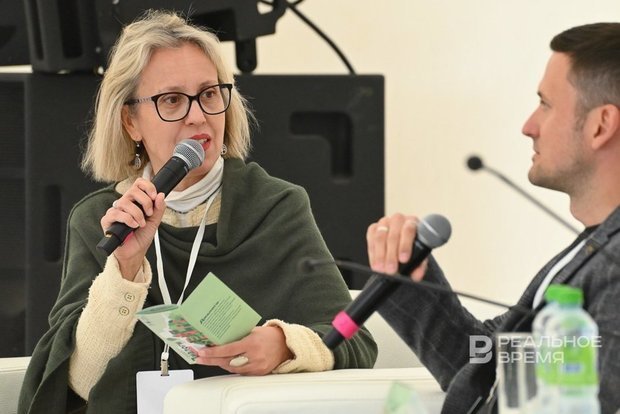
Then Albert Shaynurov, the deputy chairman of the External Improvement Committee of the Executive Committee of Kazan, shared the main problems and ways to solve them in the field of green infrastructure of Kazan:
“The culture of our citizens is getting higher and higher every year. If earlier they asked just to plant plants, now they need certain types. Previously, you could just plant a tree, but now they say: “I want to see a Tatar maple here.” People are starting to understand this, and the culture is getting higher. Perhaps, the programmes that take place both throughout the country and in our republic have played a good role in this. For example, in Kazan in 2011, the Green Record programme was launched. We had a hurricane in 2007, and a dry summer in 2010. Then a lot of trees were damaged. After launching the programme, we realised that we have more cars than trees. But now we have three times more plants. But again, people don't just need trees, they need something else," he said.
“Returning to the topic of birds. When people say that something hinders them, then we need to figure out — what exactly prevents? It is not the singing of nightingales that hinder, but, as a rule, crows. Such a problem really exists. Developers and management companies are trying to fight it in different ways. There were problems when birds attacked various flower beds and lawns, creating real bald patches. Management companies appealed to the Committee on Biological Resources, and there they were offered to include the sounds of birds of prey at regular intervals. But if you have birds flying here, then there are pests. Look at what's going on with the soil," he continued.

As for trees pruning, Shaynurov confirmed that such a problem exists, but already today “studies are being conducted”, where specialists are shown how to do it correctly, and progress is already being felt in some places. “If we have instilled a culture of people choosing which trees they want, then I think there will soon be a culture of how to trim them neatly," he stressed.
“Have you faced any conflicts as a citizen, or do you live in an ideal world?"
“Until six o'clock we are officials, but after that, we are just ordinary citizens. Conflicts happen — for example, cars are put on lawns. But there is a good effect here that a lot of local residents are involved in the restoration. That is, not just a janitor or a gardener should come and do it, but it is necessary to organise some kind of action. Everyone does it. More and more people are being attracted. And when some kind of violation occurs, the reverse effect of public censure begins to work. A resident may say, “What are you doing? It was made by us! I planted this bush!” At the very beginning, management companies used to say: “Why do we need this? It's better if we plant it ourselves, and there will be fewer problems.” Now they have realised that it works. Yes, for them it is a problem of organisation. But it happens that a resident then goes out himself and asks the janitors: “Where can I get water? I planted this tree with my son, so I will water it myself.” I will not say that it is everywhere, but it is beginning to take place," he said.
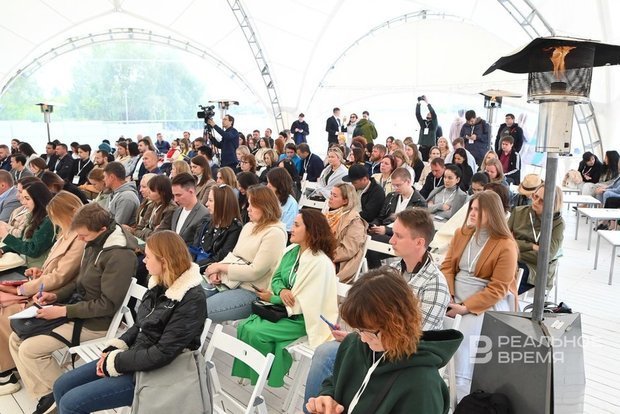
“Maybe it's good that fir trees will finally die”
At the end of the discussion, Khusnutdinova asked the question: “Is it possible to inform citizens about what is worth planting and what is not?" Alexander Matyukha decided to answer it:
“It is a project task to decide what to plant, because there are a lot of factors. The city is heterogeneous, and it is necessary to take into account the conditions of each specific site (humidity, lumen, soil). It is possible to make a manual on climatic conditions. Kazan is in the fourth climatic zone, and it needs plants that will survive the winter conditions normally. It makes sense to hold co-participating sessions in order to collect some wishes of citizens and filter them by specialists. It is very difficult to create some kind of map or geolocation system that will give out a certain breed composition and recommendations. Theoretically, it is possible, but it will be very expensive. We need to work systematically with the citizens," he said.
In turn, Safiullin added that the final decision in this matter should still remain with the professionals.
“I want to say one thing, after which I may not be invited anymore. Kazan is losing its identity because of spruce in mass planting. In the forest-steppe zone, spruce cannot occupy a leading position. I know why it happened: just certain people expressed the wish that everything should be green and coniferous. But there is a pine tree that feels great, grows and preserves the identity of Kazan. It is important not only what the citizens will say, and some kind of strong-willed decision, but we also need to listen to specialists," he said.
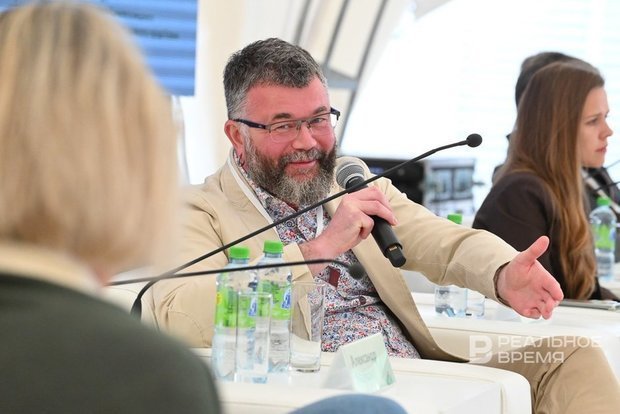
Matyukha supported his colleague and said that an ordinary spruce tree suffers very much during the Kazan summer:
“This is the species that tolerates drought conditions very hard. Even the blue spruce, which, it would seem, tolerates everything, also suffers. We also have a lot of pests. Just now I has been passing by the Palace of Farmers. There, the ordinary planting of fir trees, which leads to the Kremlin embankment, is drying up, because there is soot of pests on it. This is Diaspididae and spider mite, which is already beginning to settle. The species is problematic, and this does not lead to creating an assortment recommended for planting in the city, taking into account the realities and climate. It is also possible to lay down the parameters of identity, choosing symbolic species," he said.
In turn, Safiullin stated:
“Maybe it's good that fir trees will finally die. Maybe the pine will be planted or the lime trees will be returned, which are more appropriate for Kazan. As for the assortment, it has been in existence for a long time and is registered. Yes, these lists are advisory in nature, but we still have to refer to him.”
“I saw thuja behind your back," Khusnutdinova said.
'What do you have against thuja? There is absolutely a decorative environment here. We distinguish between different types of landscape: natural, urbanised, purely decorative. Well, let it stand there," the expert explained.
“All this work should be carried out by the landscape architect of the city. Do you have one? No. But it is not really there in any of the cities of Russia. This is a big problem. There is one in Belgorod, but it appeared only last year," Safiullin concluded.

Palchikov also intervened in the dialogue, who called on the authorities, no matter what, to act for the benefit of future generations:
“I want to call all the people in power. Time goes fast. Think about how quickly the New Year comes after 25-30 years. There is very little time to do something useful. A person who holds a certain position has especially little, but he has a unique opportunity, while he is in this post, to do something using his authority. I urge everyone to remember and not forget why we are all on this earth. Not like “the day went — and thank God”, and it's fine. We do everything to create life. To whom? To our children," he said.
“We've been just driving with a colleague in the car. We talked. We saw beautiful Kazan. The last time I was here was in 2011. Everything is fine, the green background is good. But when you start to look closely, please forgive me, you see problems. There are professionals here, an interested audience, and there are more such people. Let's create not a momentary picture, but look strategically into the future and think about what we are creating," he concluded the dialogue.